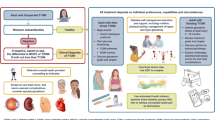Summary
The current classification and diagnostic criteria for diabetes mellitus were introduced by the United States National Data Group in 1979 and endorsed by the World Health Organization in 1980, with modifications in 1985 and 1994. The criteria, chosen to reflect the risk of complications, were the synthesis of considerable thought and expertise and represented a consensus which, it was hoped, would prove helpful to all those involved with diabetes – practising clinician, research scientist and epidemiologist alike. The inconvenience, variability and nonphysiological nature of the oral glucose tolerance test (OGTT) are well-recognised. In spite of these limitations the 2-h post-load plasma glucose has remained the standard against which all other tests have been evaluated. This article reviews the original justification for the OGTT, and in the light of more recent epidemiological research seeks to place the current diagnostic criteria for diabetes into a pathophysiological, diagnostic and prognostic perspective. [Diabetologia (1997) 40: 247–255]
Article PDF
Similar content being viewed by others
Explore related subjects
Discover the latest articles and news from researchers in related subjects, suggested using machine learning.Avoid common mistakes on your manuscript.
Author information
Authors and Affiliations
Additional information
Received: 7 August 1996 and in revised form: 19 November 1996
Rights and permissions
About this article
Cite this article
McCance, D., Hanson, R., Pettitt, D. et al. Diagnosing diabetes mellitus – do we need new criteria?. Diabetologia 40, 247–255 (1997). https://doi.org/10.1007/s001250050671
Issue Date:
DOI: https://doi.org/10.1007/s001250050671




